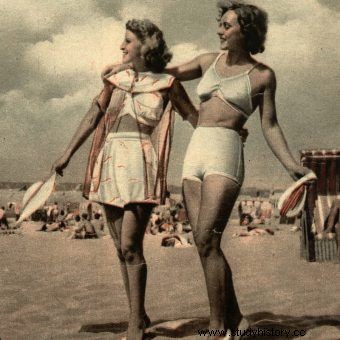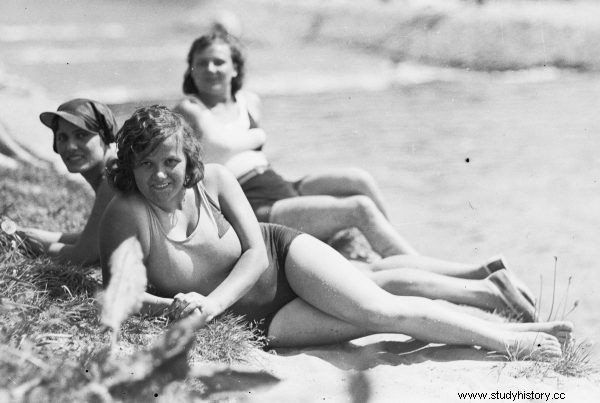Weird lines from clothes and shoes, uneven sun exposure, skin burned to the crackle. A tan does not always look beautiful. If you want to get rid of excess color from your skin, we suggest ways from a century ago. Because then the women declared a real war on the traces of tanning ...
During the nineteenth and early twentieth centuries, the elegant lady changed toilets and hairdos, but one element of her image remained constant - a flawless complexion.
At the very thought of the now popular tanning cream, bronzer or a visit to the solarium, a woman of that era could faint with terror. The tan didn't go "in company."

The most fashionable beachwear presented by the weekly magazine "Światowid" in the summer of 1939.
The burning skin was the domain of people from the lower social classes, for whom hard work in the open air was an everyday reality. To protect themselves from the sun, women, for example, wore wide-brimmed hats or wore Japanese-style umbrellas. And it was like that until the end of the 1920s.
Many ladies, if they happened to catch a little sun, they wanted to lure that little color from their faces at all costs. They could join this fight by resorting to a variety of freckles. But they could also try the measures suggested by Ellen D'Aubelle in 1937.

Beach-goers while relaxing. In the background, a fragment of the Lasocki palace is visible (photo:Illustrated Daily Courier - Archive of Illustrations).
It was necessary to collect more lilac flowers, boil it in water and cool it slightly. The warm decoction was applied to the face in the form of compresses. Another mixture required half a liter of water, a teaspoon of benzoin, a teaspoon of orange flower, and a pinch of alum powder.
All the ingredients had to be put into a saucepan, brought to a boil and made a face steam bath. And there was only one thing to remember, to wrap your hair in a towel. The face was steamed for 10 minutes, then it was time to wash it with cold water and cologne. The latter mixture, due to its alcohol content, has an astringent effect on the pores opened by the heat.
***
Dozens of reliable recipes. Affordable recipes. And this:a fascinating story about how Polish women cared for themselves in pre-war Poland. Buy your own copy of Aleksandra Zaprutko-Janicka's book “Beauty without preservatives. Beauty secrets of our great-grandmothers. ”
